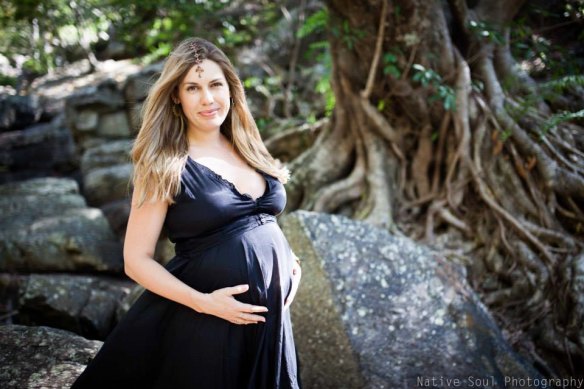The good, the bad and the smelly: The reality of share-house living
Watching Netflix’s true-crime series Worst Roommate Ever (where roommates are revealed to be con artists and murderers) you’d be forgiven for assuming that having housemates is a dangerous endeavour to be avoided at all costs.

A housemate could turn into a long-term friend. Credit: Jelena Jojic Tomic / Stocksy Uni
However, aside from one housemate with a culinary passion for eggs so intense that a sulphuric odour was regularly omitted from their pores, and another who unexpectedly brought home a Russian bride, from my experience and those others have shared with me, the majority of housemate relationships are overwhelmingly positive. So much so, they often lead to the development of lifelong friendships and treasured memories, and fundamentally change us for the better.
Clinical psychologist and author of Difficult People, Dr Rebecca Ray, says that there is a good reason for this. “Housemate experiences often coincide with transitional periods, such as university or early adulthood, where individuals are exploring their identities and gaining independence. These times are significant because they involve a lot of personal growth and change,” she says.
For me, it was at age 17, when I moved from the regional Victorian city I grew up in to the “big smoke” for university. It was the first time I had lived away from home and had decided to share a house close to campus with a classmate from school, Tim, who was attending the same university.
While Tim and I had shared a couple of the same classes in year 12, we hadn’t known each other long, nor were we overly close. But we had enough of a friendship to be relatively sure that we wouldn’t kill each other after a week, so we moved the garage sale furniture we’d jointly invested in, into the modest townhouse in Melbourne’s south-east.
That year was in many ways a comedy of errors. We were both domestically challenged and unequivocally lazy. We became too reliant on cheap, packet pasta and tinned soup, consumed a dangerous amount of wine from a box, and threw regular parties that resulted in many questionable events, including one infamous “nudie run” down a neighbouring street, which saw us accidentally locked out of the house and required a very exposing climb to the second-storey window to get back in.
Ray says it is these daily, shared living experiences – albeit probably not the streaking – that make housemate relationships unique. “Unlike other relationships, housemates navigate the complexities of cohabitation, including shared responsibilities, personal space and communal activities,” she says. “This level of intimacy and constant interaction can lead to a deeper understanding and bond that is distinct from other types of relationships.”
Through all of those experiences, as well as through the many long conversations and periods of comfortable silences, by the end of the year when our lease was up it was clear that Tim and I had transitioned from schoolmates to housemates and then to good friends. We remain friends today.
Here, two other women share how housemates had a positive impact on their lives.
“We have never lived apart”
LINDY ANDREWS, 59

Lindy Andrews and her husband Craig who she met in a sharehouse.
My now-husband Craig and I met through mutual friends I had grown up with, and he had known since childhood. I was living in a house with a group of these friends, three other women and two men in a large terrace house in Surry Hills, Sydney.
We disbanded when some went overseas and others returned home to Mullumbimby, so Craig, who was living elsewhere, and I moved into another terrace in Surry Hills with two other guys we met through the first group. Craig and I became best friends quickly and did everything together – cooked meals, went to nightclubs, dinners and excursions. Once this house disbanded, Craig and I rented a townhouse in Ultimo together.
At the time, our only mode of transport was his work motorbike which he had for his job as a courier for Channel 7. I worked in a newsagency in Neutral Bay, and he would take me and pick me up from work each day. Eventually, we got together after I came home after a girls’ lunch. It was November 1984, I was 19, Craig 24.
Our memories during this time were of us spending a lot of time together. We’d eat out at fancy restaurants, go to the beach, snorkelling, and we travelled the Pacific Highway frequently to visit our friends for birthdays and celebrations in Mullumbimby. We wore out this path for many years in old cars that would often break down, so we’d have to stay in small towns waiting for the local mechanic to open.
Once, I was given tickets to a Michael Jackson concert at Parramatta Stadium but Craig had no interest in attending. I insisted we go but by the time we went to the stadium he had convinced me to sell the tickets so we could go out for dinner. I’ve still not forgiven him!
He was, and remains, a caring, funny guy who always has my best interests at heart; he watched out for me. This is something I had never experienced as I came from an extremely dysfunctional family growing up.
We married in 1987 and have never lived apart.
“I dream of communal living again”
IMOGENE WHITTLE, 42

Imogene didn’t move out of her sharehouse until she was married and pregnant.
I lived in the same sharehouse for more than five years, from late from 2007 to 2013. I moved in at age 26 and moved out at 31.
When I moved in, I was working in arts administration and interning at an arts festival after returning from a year abroad in Canada. When I moved out, I was a creative director of an arts organisation. I was also married and pregnant.
The home was a massive, stunning Queenslander in Annerley, Brisbane, with a huge verandah, a big corner backyard, massive tree, and a pool. It had six bedrooms, two lounge rooms, a sunroom, a gigantic kitchen, and a pool table. It was called ‘San Jose’. The name came with the house – I still have the house’s name tile.
Everyone who lived there was a young professional in their late 20s or early 30s. Some were higher education students. We lived like a communal family. I loved that we ate together most nights. We set up a cooking roster to deal with the inconvenience of too many people trying to share the kitchen. But it turned into one of the best parts of communal living as we had a wonderful feast every night.
We had a dinner horn; a real hollowed-out buffalo horn. The house was too big to knock on everyone’s doors so we just blew the horn when dinner was ready and the housemates would come running.
Because of the roster, each of us only cooked three times a month, so we put a lot of thought and effort into our meals. If you weren’t home, there was always a plate waiting for you. I’d go back to sharehouse living just for that cooking roster.
We even had a house diary, which was great. If you were away, or you needed to communicate something about the house, if there was a problem you wanted help with, or a special date, or even if you just wanted to write a poem, the diary was there. Every day we’d check or write in the diary.
Our house gatherings were particularly epic: the dress-up and pool parties were extremely memorable. But even on a regular night, it didn’t take much for us to turn an evening into a spontaneous celebration.
I love the sharing nature of living communally: that it’s still possible to share households and lives while being professionals, not in a hippy way. We loved sharing and coming together, living side by side, with our own different lifestyles. We all chose to live this way, not just to save money but to have a more enriching life. There were great life lessons in communication, teamwork, negotiation, leading, staying curious, and not taking life too seriously.
Many friendships were made, there were a few break-ups, there was a short-lived engagement, a couple who met at a party married, and me – engaged, married and pregnant.
We became like sisters and brothers. We loved being able to rely on each other and always having someone ask, ‘How was your day?’ Or to share a meal with. We all still have such a strong bond today.
Sometimes my friends and I dream of living as retirees in shared communal living again – all with our own dwelling on the same plot of land. Or perhaps we could take over a resort. I think it would be a happy lifestyle.
Get the best of Sunday Life magazine delivered to your inbox every Sunday morning. Sign up here for our free newsletter.